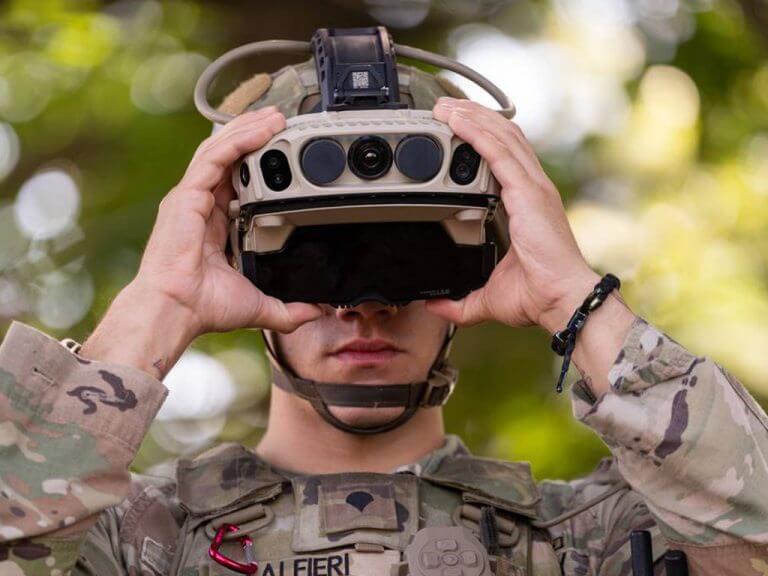The joint Microsoft and US Army’s Integrated Visual Augmentation System project has been a see-saw of conflicts and solutions for both parties over the past three years, but recent revisions to the hardware may be the first signs of clear skies on the multi-billion dollar partnership.
In a recent interview with Bloomberg, an Army official has revealed that assigned revisions to Microsoft’s HoloLens headset have helped the combat goggles mark its most successful test run to date.
Prior to the successful test run, Microsoft had been given notes from soldiers participating in field tests with the IVAS 1.1 headset to address headaches, nausea, eye strain and disorientation caused by wearing the goggles.
Since the feedback, it’s been reported that Microsoft has crafted a lighter and slimmer version of its flagship HoloLens headset meant to specifically address soldiers concerns such as weight and reliability as well as maintain the strict requirements to pass the Army’s series of planned field tests before it takes order of 120,000 pairs of goggles worth $22 billion over the next ten years.
Microsoft “changed a lot of people — different leadership came in, different engineers.” Those actions “seemed to make a big difference in their output,” said assistant Army Secretary Doug Bush.
“It’s much closer to something soldiers are going to want to use if it helps them do their mission, ” Bush said. The new system has a “much better night-vision camera” and its software is more stable.
This past June marked the first of many difficult milestones in the Microsoft and Army partnership, with the first make-or-break field test of the IVAS development and Microsoft slipped past by the skin of its teeth. Consequently, the US Congress halted the free flow of funding for the IVAS project temporarily until Microsoft could more convincingly pass future field tests.
While Microsoft and the Army continue to put the headset through its paces, 2025 marks the next significant operational test that could end up being the punctuation on the IVAS project.
Microsoft’s HoloLens augmented reality hardware and technologies were tapped by the US Army as the foundation for the IVAS project but have had to go through rigorous alterations, tweaks and revisions to transition from commercial applications to combat-ready tools.
The evolution from commercial AR headset to field tactical goggles has often kept Microsoft behind the eight-ball and scrambling to keep its potential $22 billion dollar deal in tact, but recent alterations seem to be putting the project on the right track and could have practical implications for future commercial versions of HoloLens.


